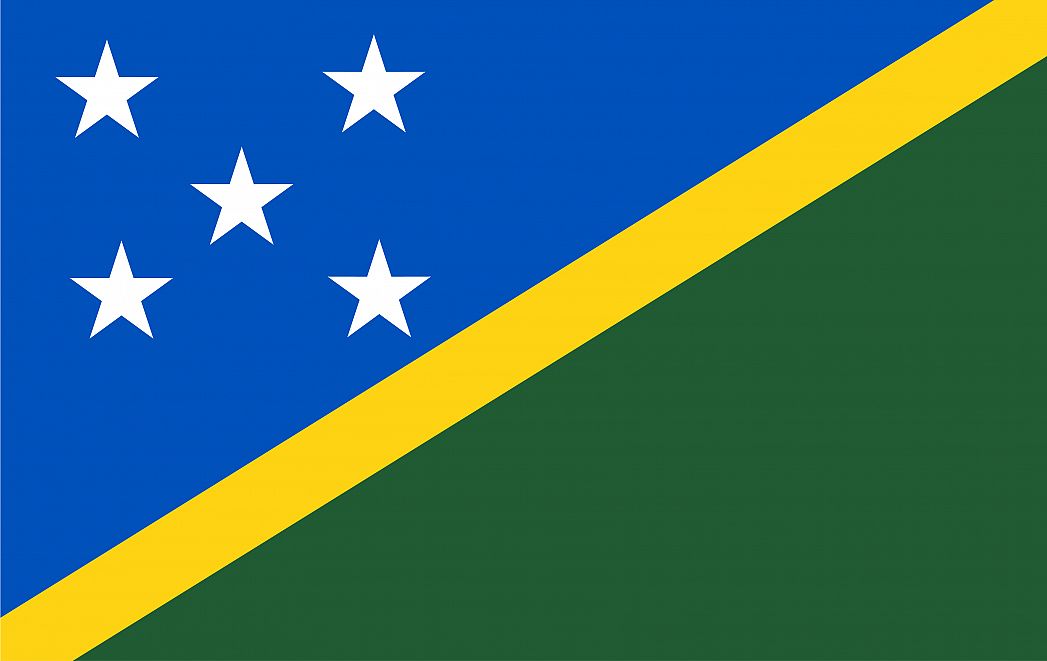A New Zealander designed the flag of the Solomon Islands. It was a contest in which many people submitted their ideas of a suitable flag for the nation. The new flag, adopted in 1978, replaced the old one that had the Union Jack and a shield against a blue ensign. The current Solomon Islands flag has four main colors: blue, white, yellow, and green. Green symbolizes the vegetation, yellow is the bright sunshine, and blue represents the waters. The flag also has five white stars which were the five provinces that existed before Solomon Islands’ independence.
The flag of Solomon Islands is made up of four colors: blue, white, yellow, and green. The flag is divided into two triangles by a yellow diagonal line. The left upper region of the flag is blue. The blue region has five white stars at the top left side of the flag. The right lower part of the flag is green in color. The Solomon Islands flag was officially adopted on November 18, 1978.
The blue color on the Solomon Islands flag symbolizes the waters of the nation. The waters include rivers, the Pacific Ocean, and rain. Green represents the land of Solomon Island as well as the crops and trees that grow on the land. The yellow color points to the sunshine radiated by the sun. The five stars represent the five provinces that existed at the time when the nation attained independence.
A New Zealander designed the Solomon Islands flag. He won a contest where the leaders requested for suggestions of the country’s flag. Two flags won the contest and the leaders one flag. However, when the flag featured on the nation’s paper called the Drum, it raised a lot of controversies and was then withdrawn. A contest to design a new flag was called in 1975. When the New Zealander submitted his proposed flag, one of the judges told him that they looked to admit flags designed by the Solomon Islands nationals only. However, later on, he discovered his flag was adopted as the country’s flag pre-independence.
This page was last modified on May 1st, 2018
More on Graphicmaps

Published on 2019-11-06
What is a Trade Embargo?

Published on 2019-11-04
Which Two Countries Used to Have the Same Flag?

Published on 2019-09-16
What Is the Only Two-Sided State Flag?

Published on 2019-09-16
Which Country Flag Looks Like the Texas Flag?

Published on 2019-08-29
Flags That Resemble the US Flag

Published on 2019-08-20
